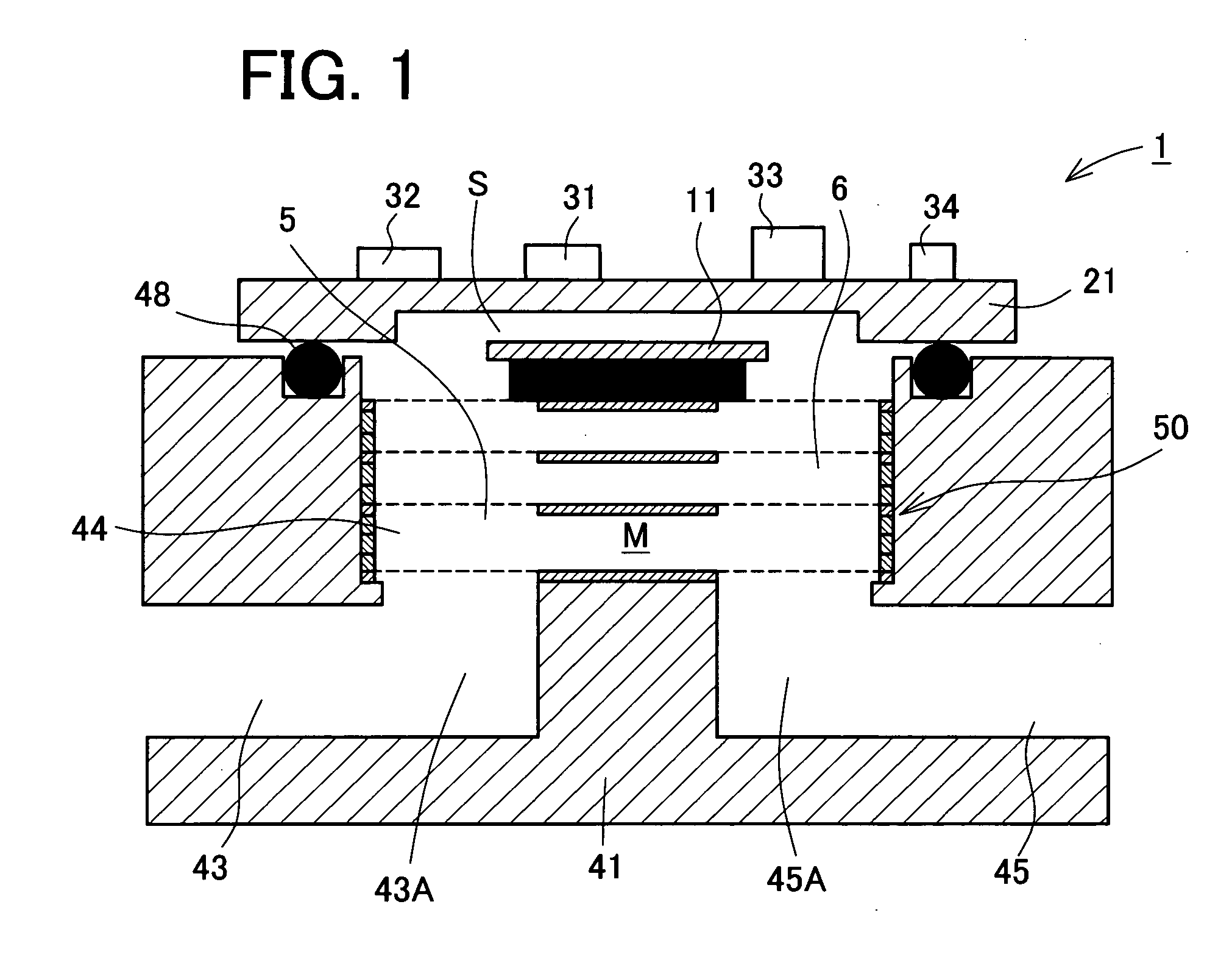Thermal flowmeter
a flowmeter and flow rate technology, applied in the field of flowmeters, can solve the problems of deteriorating pressure characteristics, affecting the flow rate of the flowmeter, and the inability to confirm the sucked state of the semiconductor chip, etc., and achieves the effect of reducing the flow rate, and improving the flow ra
- Summary
- Abstract
- Description
- Claims
- Application Information
AI Technical Summary
Benefits of technology
Problems solved by technology
Method used
Image
Examples
first embodiment
[0070] First, a description will be given of a first embodiment of the present invention. A schematic construction of a thermal flowmeter according to the first embodiment is shown in FIG. 1, which is a sectional view of the thermal flowmeter indicated at 1. As shown in FIG. 1, the thermal flowmeter 1 of this first embodiment includes a body 41, a sensor substrate 21, and a laminate 50. With the laminate 50 fitted in a channel space 44 formed in the body 41, the sensor substrate 21 is brought into close contact with the body 41 through a seal packing 48 with use of screws. In this way there are formed a sensor channel S and a main channel M as a bypass channel relative to the sensor channel S.
[0071] As shown in FIGS. 2 and 3, the body 41 is in the shape of a rectangular parallelepiped and is symmetric right and left. FIG. 2 is a plan view showing the body 41 and FIG. 3 is a sectional view taken on line A-A in FIG. 2. An inlet port 42 and an outlet port 46 are formed in both end fac...
second embodiment
[0108] A second embodiment of the present invention will now be described. A schematic construction of a thermal flowmeter according to this second embodiment is shown in FIG. 20. As shown in the same figure, the thermal flowmeter of this second embodiment, indicated at 101, is the same in basic construction as the thermal flowmeter 1 of the first embodiment, but is different in the shape of body in order to attain a further reduction of size. Thin sheets which constitute a laminate used in this second embodiment are also different in shape. Therefore, the different points from the first embodiment will mainly be described below. The same constructional points as in the first embodiment are identified by the same reference numerals as in the first embodiment, and explanations thereof will be omitted suitably.
[0109] First, a description will be given of a body in this second embodiment with reference to FIGS. 20 and 21. FIG. 21 is a plan view of the body. As shown in FIG. 21, the bo...
PUM
 Login to View More
Login to View More Abstract
Description
Claims
Application Information
 Login to View More
Login to View More - R&D
- Intellectual Property
- Life Sciences
- Materials
- Tech Scout
- Unparalleled Data Quality
- Higher Quality Content
- 60% Fewer Hallucinations
Browse by: Latest US Patents, China's latest patents, Technical Efficacy Thesaurus, Application Domain, Technology Topic, Popular Technical Reports.
© 2025 PatSnap. All rights reserved.Legal|Privacy policy|Modern Slavery Act Transparency Statement|Sitemap|About US| Contact US: help@patsnap.com



